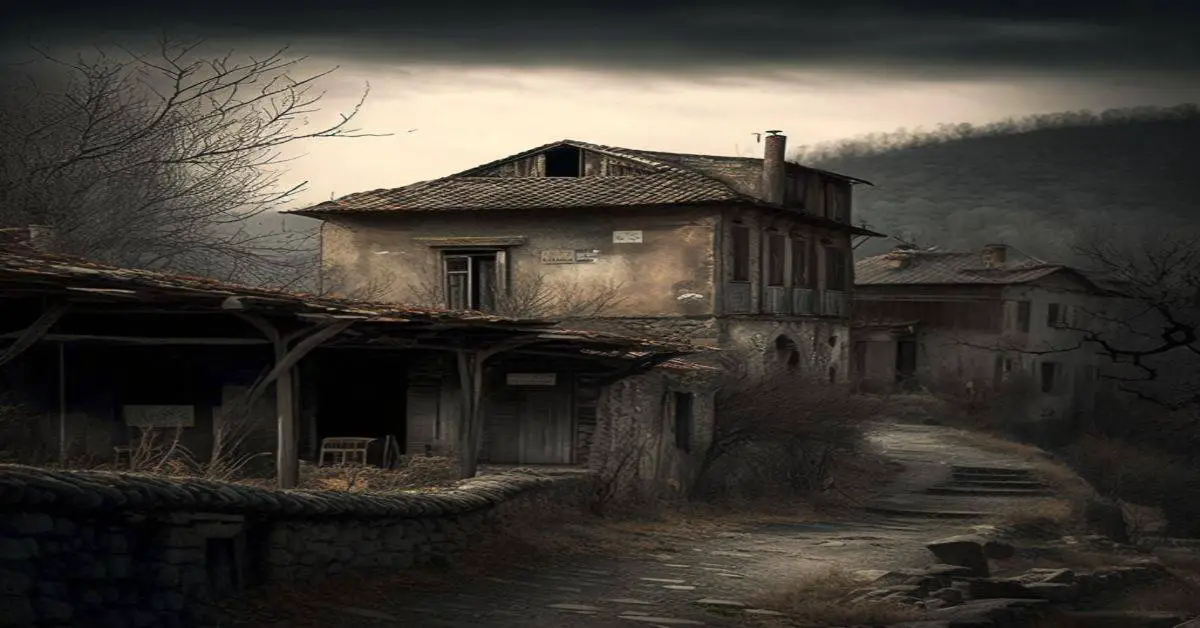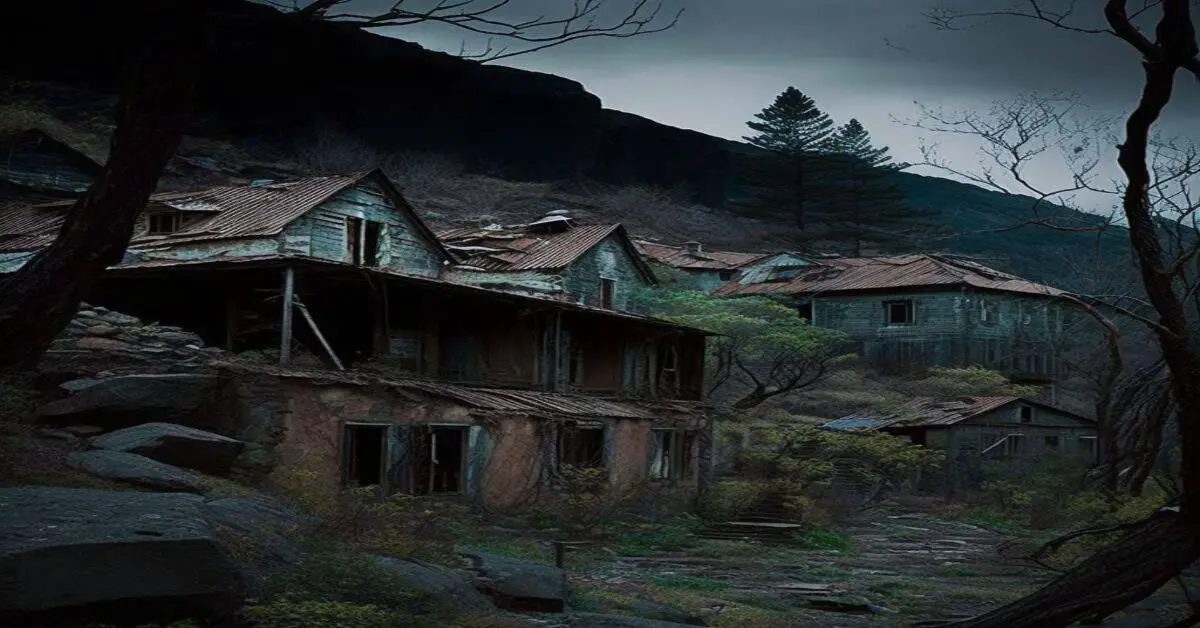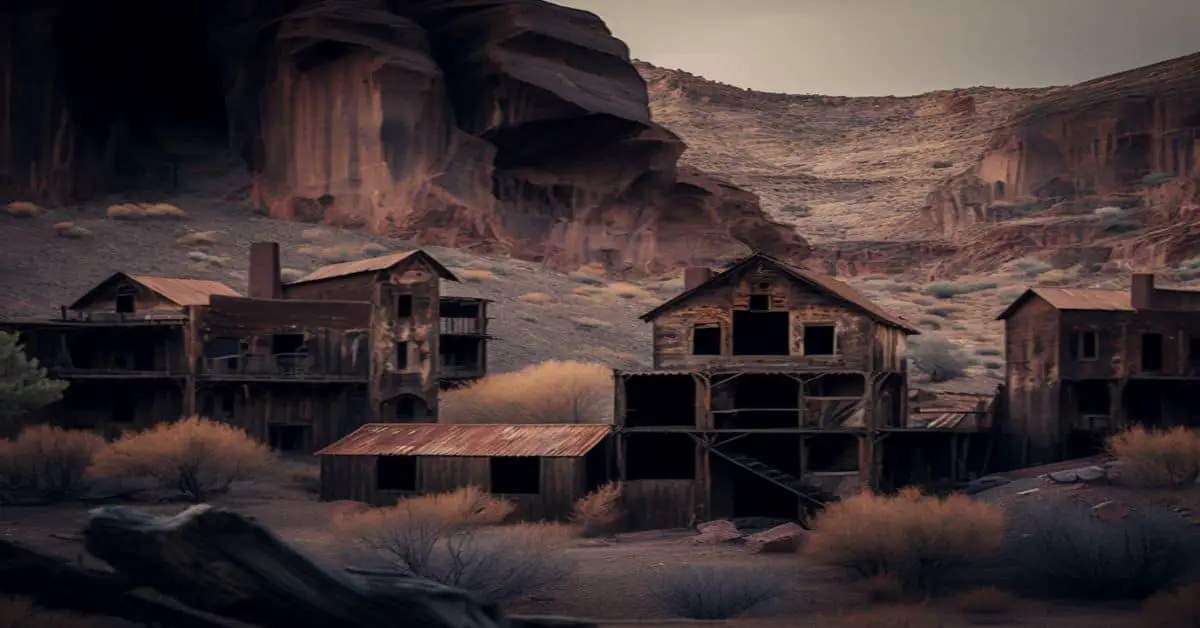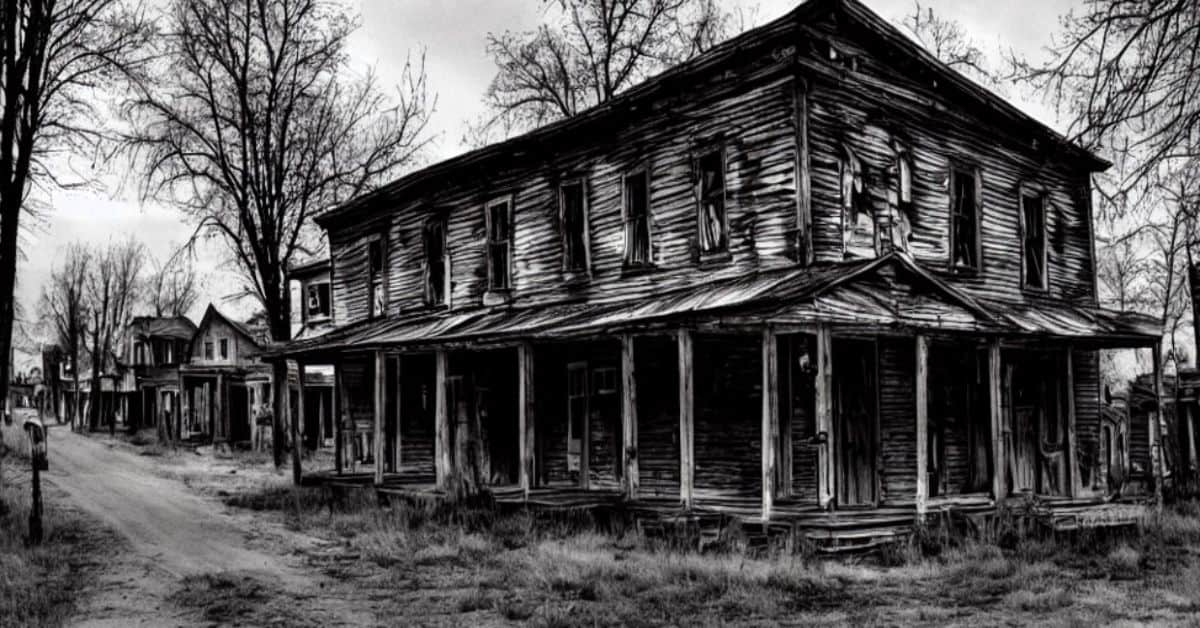As the sixteenth state to join the United States of America, Tennessee has plenty of history to cover its 200-year existence.
There are about 15 ghost towns in Tennessee, but it is believed this current number is not a complete count. Due to historical natural disasters, flooding, and inaccessible territory, there may be more ghost towns in Tennessee’s history than available records show.
Tennessee is well known for its ties to Elvis Presley, Graceland, Home of the Blues, the Grand Ole Opry, and the Great Smoky Mountains, but the history goes even deeper. The seventh president of the United States, Andrew Jackson, called Tennessee home. The Civil War significantly shaped the state, and Tennessee even has a life-size replica of the Parthenon in Athens, Greece.
Cades Cove, Tennessee
Cades Cove, Tennessee, is a valley located within the Smoky Mountain National Park. This particular section of the park harbors abandoned buildings and falls under the title of a ghost town. The name Cades Cove originated from Chief Kade, a Tsiya’hi leader.
Cades Cove is one of Tennessee’s most visited ghost towns, with over two million visitors annually. The views are one of a kind, the buildings are well preserved, and every day offers fantastic opportunities to see the local wildlife.
Sometime before 1797, the Cherokee established a settlement known as Otter Place due to an overabundance of otters in the area along Cove Creek. It is debatable whether this establishment was for seasonal hunting or longer-term living. By the time European settlers discovered the site, the otters had disappeared.
European settlers began residing in Cades Cove in the early 1800s. Throughout the 1820s, the settlement witnessed significant growth as designs were put in place to drain the swampy area, forges were built to create metal tools, erected mills, and the population grew to over 600 residents.
In the years before the Civil War, it is believed Cades Cove offered a stop along the Underground Railroad. During the Civil War, Cades Cove was a frequent location of attack as it remained pro-Union. Livestock was frequently stolen from the residents, and anyone believed or known to be a Union supporter was killed.
In 1864, a small militia formed in Cades Cove to counterattack the raids on their town. The militia succeeded, but it was not long until a group of Confederates could sneak into the settlement and kill the militia leader.
Cades Cove’s residents resisted being incorporated into the Great Smoky Mountain National Park in the early 1900s. By 1927, after receiving the necessary funds to buy the land, the Park Commission had the power to establish national park boundaries and seize all properties.
The residents of Cades Cove were furious with the changes. They threatened Colonel David Chapman’s safety, the Park Commission’s head, before the final resident abandoned their property in 1937. In defiance of the Park Commission’s choice to incorporate Cades Cove into the national park, families who attended the Primitive Baptist Church would continue to meet for service through the end of the 1960s.
Most of the more modern buildings were demolished, but the National Park Service, but some cabins and barns were left to represent early pioneer life. It was also decided to leave the settlement area as a meadow rather than replant the cut-down trees of previous times used for building and logging work. Cades Cove has been listed as a historic district on the National Register of Historic Places since July 13, 1977.
Buildings that are still standing in Cades Cove include:
- John Oliver’s Cabin was built in 1822.
- Primitive Baptist Church and cemetery were built in 1887.
- Cades Cove Methodist Church and the cemetery were built in 1902.
- Cades Cove Missionary Baptist Church was built in 1915.
- Myers Barn was built in 1920.
- Elijah Oliver’s Cabin was built in 1866 (this is his second home since his first was destroyed during the Civil War.)
- John Cable Grist Mill was built in 1868.
- Becky Cable House was built in 1879 (initially used as a general store. Included buildings are a barn, carriage house, chicken coop, molasses still, sorghum press, and blacksmith shop.)
- Henry Whitehead Cabin was built in 1895.
- Dan Lawson Place was built in the 1840s (Dan Lawson was the wealthiest resident of Cades Cove. The property includes a cabin, smokehouse, chicken coop, and a hay barn.)
- Tipton Place was built in the 1880s (The homestead includes a smokehouse, woodshed, corn crib, carriage house, blacksmith shop, and a double-cantilever barn.)
- Carter Shields Cabin was built in the 1880s.
Elkmont, Tennessee
If you are traveling through the Great Smoky Mountain National Park in the upper Little River Valley area, you will most likely see an Elkmont sign depicting a campground and ranger station. Before it was either a campground or ranger station, Elkmont was a pioneer community that started as a logging town and eventually as a resort host.
Before it was known as Elkmont, the area was known as Little River. In the 1840s, the first inhabitants searched for gold in the creeks and nearby waterways. A small community arose and established an agricultural economy mainly based on apples, corn, and honey.
Elkmont, Tennessee, was established in 1908 as the Little River Lumber Company base in an area known as Little River and Jakes Creek. Within two years, The Little River Lumber Company started to sell land plots to hunters and anglers that frequented the Elkmont area from Knoxville. The new landowners started the Appalachian Club just south of the town and, in 1912, built a resort-like hotel known as Wonderland Park Hotel.
In 1919, a group of businessmen bought the Wonderland Park Hotel from the current owners and turned it into the Wonderland Club. Over the next couple of decades, the Wonderland Club changed from a pioneer club for hunters and anglers to a resort for the elite and wealthy.
When the Park Commission established the boundaries for the Great Smoky Mountain National Park, the town of Elkmont was inside the boundary lines. The current property owners were given lifetime leases to maintain and reside in their homes; however, those lifetime leases were then changed to twenty-year leases and ultimately ended altogether when the park’s management refused to renew for another twenty years in 1992.
The park’s management team had planned on removing and demolishing the buildings that were part of Elkmont. Still, in 1994, the Wonderland Hotel and several other buildings were put on the National Register of Historic Places list.
In 2009, the National Park Service initiated plans to restore the Appalachian Clubhouse and 18 other outbuildings and cottages. The Wonderland Club collapsed in 2005. Other properties have since been restored, but there is still a lot of work to restore and maintain the buildings that are still standing.
No Business, Tennessee
No Business, was a small community established along No Business Creek in 1796. Revolutionary War Veteran Richard Slaven was believed to have been given a land grant in the Big South Fork area of Tennessee and became the first permanent settler in No Business.
During the last part of the 1800s, the population grew to over 300 and became one of the area’s larger communities. Unfortunately, the isolation of the settlement, lack of work, and lack of available land started the community’s downfall, and many residents moved away.
As World War II was making news, many of the men who remained in No Business left to serve their country and did not intend to return to an area of isolation after the war ended. The last resident of No Business, Dewey Slave, left in 1960.
The Town That Didn’t Drown, And The Town That Did
Jefferson, Tennessee, was the first county seat in Rutherford County, but it is also known for something else, or rather, something that was supposed to happen but never did. The town was established in a beautiful location at the bend of Stones River and became an important river port and trading post. Being the first county seat in 1803, it would later lose that title in 1811 as the seat was moved to Murfreesboro.
In 1963, the US Army Corps of Engineers began constructing a dam to create Percy Priest Lake. Jefferson’s town was directly in the path of where the dam’s backwater would travel, resulting in the residents of Jefferson being required to leave the area and find a new residences in nearby towns and cities. The dam would take four years to build, giving residents time to relocate.
As the dam was nearing completion, the town of Jefferson and surrounding land were purchased and burned. The homes and buildings were burned to the ground to prepare for the flood that was to happen. Something strange started to happen as the water began to flow towards Jefferson and into the new Percy Priest Lake.
The water was draining into hidden caves and spared the town from flooding. The hidden cave location is now known as Long Hunter State Park, and all that remains of Jefferson are old foundations, a cemetery, and a few abandoned buildings that were not set ablaze in 1963.
While one town did not drown, there is one that did. At the bottom of Watauga Lake is the once-lived-in town of Butler, Tennessee. Butler was established and founded in the 1760s and was frequently flooded during the rainy season as the water levels would rise in the Watauga River. Elizabethton, another town near the Watauga River, experienced the same seasonal floods.
Due to a devastating flood in the early 1940s that resulted in six deaths and a large portion of the Elizabethton-to-Mountain City Railroad being washed out, Tennessee engineers created a Watauga Dam plan. Construction on the dam began in 1942 after all the buildings and land were purchased in Butler for $35,000.
The 650 families of Butler relocated to higher ground during the construction period. Over 125 buildings were moved to the new location of Butler. Dam construction was slowed down during the war but resumed in 1946 and was completed in 1948.
On December 1, 1948, the water gates closed at the finished Watauga Dam, and the area where the original town of Butler was founded started to flood as the new reservoir was created. In 1954 the drought and low water levels allowed Butler residents to see the old town and what was left of foundations and unmoved buildings.
There was another drought in 1983 that served as a visual reminder of the community that once was. Today, Butler is known as the town that would not drown.
Haunted Locations In Tennessee
If ghost towns are not enough excitement and adventure, check out some of Tennessee’s most haunted places.
Tennessee State Prison in Nashville officially closed in 1992. Built in 1889, the prison has had its share of riots, fires, inhumane conditions, and the execution of more than 100 prisoners using the electric chair. All the lives Old Sparky took, the prison’s electric chair still roams the halls and yards.
Voices and footsteps are often heard throughout the property while filming The Green Mile, Ernest Goes to Jail, and The Last Castle. The assassin of Martin Luther King Jr. was housed within the prison walls, and Johnny Cash is known to have played for inmates at the Tennessee State Prison.
In 1798, General James Winchester started construction on his home. Cragfont has many stories from those who have dared to visit. Candlelight can be seen when no one is in the house, the General can be seen staring at visitors from a second-story balcony, and items are said to have been thrown at them while in the home. Unexplained apparitions appear in pictures and videos, and those brave enough to enter the nursery expect an unpleasant experience.
Over 70 murders, including battles from the Revolutionary War and the Civil War, have happened at the Wheatlands Plantation in Sevierville. Adjacent to the property, the Battle of Boyd’s Creek took place, which resulted in approximately 28 Indian casualties.
At least two Revolutionary War soldiers and 69 slaves are buried within the property lines. If the ghosts of those who have died during the war are not terrifying enough, the reoccurring bloodstains in the parlor might do the trick.
When the plantation owner left the estate to her grandson, his father became jealous and confronted his son. The result of the confrontation left the father murdered by his son on the parlor floor after being fatally injured with an iron poker. The floors have been cleaned multiple times, yet the bloodstain still returns.
Carnton Plantation in Franklin, Tennessee, served as a field hospital for the battle of Franklin during the Civil War. The battle lasted only a few hours, but the number of casualties was over 8,000. More than half of the deaths were of Confederate troops and Confederate generals. Four of those generals were noted to have received care at the Cranton Plantation; John Adams, Otho Strahl, Patrick Cleburne, and Hiram Granbury.
The generals were laid on the back porch, where their blood stained the structure and is still visible today. A ghost of one of the generals appears to be pacing the back porch, walking the property parameter, and occasionally talking to individuals who are alone. In contrast, another general seems unable to rest, as if waiting for a battle to start.
On the Grand Opera House site that was destroyed in a fire in 1923 now sits the Orpheum Theater. The Orpheum was constructed in 1928 and has over 2,300 seats. It is said that six ghosts stay at the theater, but one is the most well-known.
A 12-year-old girl named Mary is frequently seen sitting in seat CF in the balcony area. Mary is described as having long brown hair, kept in a braid, and wearing a white dress.



